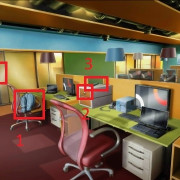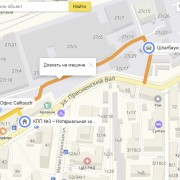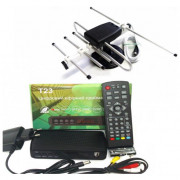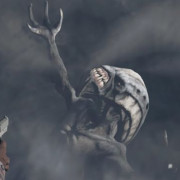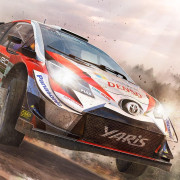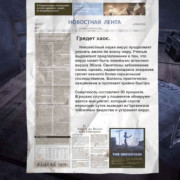Grappling hook mod — крюки [1.12.2] [1.11.2] [1.8.9] [1.7.10]
Содержание:
Fleeing Behavior[]
Whether or not a dino can be grappled is not based on what the dino is, it is based on their current behavior state. For example, a Dilophosaurus can be grappled and dragged when it is wandering or when it is attacking you. However, as soon as it turns to flee the line will break. Hitting a dino with a Grappling Hook does not aggro it. This is important for Quetzal taming. A Quetzal can be grappled and drag the player around as long as it is not damaged. However, the moment it is shot it will begin fleeing and break the line. That means that grappled Quetzals can be used for transportation, but not taming. Similarly, wild Pteranodons can be hijacked and ridden, though their low carry weight may slow them down significantly. An Argentavis, on the other hand, has a high carry weight and will attack the player if provoked.
Wild creatures usually flee under these 3 conditions:
- Fleeing for life. This applies to those passive-flee creatures, and creatures at critical health.
- They have high torpor, therefore about to faint.
- They found their target unattainable (e.g. a flying mount keeps attacking a wild land dinosaur without entering its attack range, the land dino might flee)
Tips/Useful Pointers
- When first unlocked, try to avoid spamming/overusing the Grappling Hook — Completely depleting the meter means having to wait to use it again.
- Ledges of buildings, rooftops, higher pathways and fences/the top of most walls make complimentary use of the Hook.
- Whilst climbable sides to buildings i.e. window frames can be grappled to, it is often better to grapple up to the highest part or ledge possible.
- Note that some building walls won’t always allow Crane to properly grab onto them, so you might have to grapple again if Crane starts falling.
- The Hook can be used to grapple from a rooftop down to the ground without sustaining damage at all. This is very useful for when needing to get to ground or lower rooftop levels in Old Town.
- Even when reaching Survivor Rank 25 where most players will be liberal in their use of the Hook, try to only use it for when you need to.
- Make use of the Hook for enemies right near the edge of rooftops or high ledges — The Hook may not do much damage but the fall damage that many enemies will sustain often kills them instantly.
Grappling Hook Mod Download Links:
| File Name | Status | Game Version | Date |
|---|---|---|---|
| Grappling Hook Mod v10 for 1.12.2 | Release | 1.12.2 | May 12, 2018 |
| Grappling Hook Mod v10 for 1.12 | Beta | 1.12 | Jul 19, 2017 |
| Grappling Hook Mod v9 for 1.11.2 | Release | 1.11.2 | Jun 8, 2017 |
| Grappling Hook Mod v9 for 1.11 | Release | 1.11 | Dec 21, 2016 |
| Grappling Hook Mod v9 for 1.10 / 1.10.2 | Release | 1.10.2 | Dec 21, 2016 |
| grappling hook mod v9 for 1.7.10 | Release | 1.7.10 | Dec 21, 2016 |
| Grappling Hook Mod v8 for 1.10 | Release | 1.10.2 | Oct 21, 2016 |
| Grappling Hook Mod v8 for 1.7.10 | Release | 1.7.10 | Oct 21, 2016 |
| Grappling Hook Mod v7 for 1.9.4 | Release | 1.9.4 | Jun 5, 2016 |
| Grappling Hook Mod v7 for 1.8.9 | Release | 1.8.9 | Jun 5, 2016 |
| Grappling Hook Mod for 1.9 | Release | 1.9 | May 23, 2016 |
| Grappling Hook Mod v6 for 1.8.8 | Release | 1.8.8 | May 23, 2016 |
| Grappling Hook Mod for 1.8 | Release | 1.8 | May 22, 2016 |
Credits: Yyon
← Spectrite Mod for Minecraft 1.12.2/1.11.2 (New Mineral)Ender Utilities Mod for Minecraft 1.12.2/1.11.2 →
Usage
Simply . Or if you want the ES6 (yeah, yeah, ES2015 or whatever) version.
From here on refers to the module itself (i.e. what you get when you ) and refers to any GrapplingHook object (i.e. an object which allows you to register and middleware, et cetera)
and expose two different API’s:
- a consumer-facing API, i.e. it allows you to add middleware functions to pre/post hooks.
- a producer-facing API, i.e. it allows you to create hooks, wrap methods with hooks, et cetera.
Consumer-facing API
synchronous middleware
i.e. the function is executed and the next middleware function in queue will be called immediately.
function () { //no callbacks
//synchronous execution
}
serially (a)synchronous middleware
i.e. the next middleware function in queue will be called once the current middleware function finishes its (asynchronous) execution.
function (next) { //a single callback
//asynchronous execution, i.e. further execution is halted until `next` is called.
setTimeout(next, 1000);
}
parallel (a)synchronous middleware
i.e. the next middleware function in queue will be called once the current middleware function signals it, however the whole queue will only be finished once the current middleware function has completed its (a)synchronous execution.
function (next, done) { //two callbacks
//asynchronous execution, i.e. further execution is halted until `next` is called.
setTimeout(next, 500);
//full middleware queue handling is halted until `done` is called.
setTimeout(done, 1000);
}
thenable middleware (promises)
function () { //no callbacks
//create promise, i.e. further execution is halted until the promise is resolved.
return promise
}
(Sidenote: all consumer-facing methods exist out of a single word)
See:
All three allow you to register middleware functions by either passing them as parameters to the method:
instance.pre('save', notifyUser, checkPermissions, doSomethingElseVeryImportant);
Or (if the grappling-hook instances are ) by chaining them with :
instance.pre('save')
.then(notifyUser)
.then(checkPermissions)
.then(doSomethingElseVeryImportant)
Additionally see:
Producer-facing API
provides you with methods to store, retrieve and reuse presets.
All factory functions allow you to reuse presets, see .
See:
objects can have 3 kinds of hooks:
Asynchronous hooks
Asynchronous hooks require a callback as the final parameter. It will be called once all pre and post middleware has finished. When using a wrapped method, the original (unwrapped) method will be called in between the pre and post middleware.
Asynchronous hooks always finish asynchronously, i.e. even if only synchronous middleware has been registered to a hook will always be called asynchronously (next tick at the earliest).
See:
Synchronous hooks
Synchronous hooks do not require a callback and allow the possibility to return values from wrapped methods.
They always finish synchronously, which means consumers are not allowed to register any asynchronous middleware (including thenables) to synchronous hooks.
See:
Thenable hooks
Thenable hooks must return a promise.
They always finish asynchronously, i.e. even if only synchronous middleware has been registered to a thenable hook the promise will be resolved asynchronously.
See:
In order to create thenable hooks must be properly .
Overview
The grappling hook is unlocked at survivor level 12 and can be used to quickly travel large distances. Using the grappling hook initially depletes a significant amount of its meter, which recharges over time.
There is no hard/full cooldown period unless the player fully exhausts the meter, which will result in the hook being unusable for a few seconds until Crane winds the hook up fully. The meter and recharge rate of the hook are increased once the player reaches survivor level 25 and thus enables Crane to use the hook more frequently and be less conservative with the hook’s meter.
This skill is particularly helpful in speeding up the player’s time in getting from one area of a map to a desired location. It is also useful for escaping hordes of undead, especially from the more agile and aggressive infected such as Virals/Night Walkers and Volatiles that have the ability to climb structures and keep up with Crane when giving chase. As a result this really helps the player to almost easily escape pursuits at night plus when coupled with near-flawless parkour skills and navigation can mean a rapid coverage across an area in such a short time.
The Hook is also helpful for the player when they need to chase enemies i.e. catching up with Bolters and Night Hunters, can help close the gap between the player and a Toad, and can help the player to catch up with Rais’ men who are running away. Without the Grappling Hook, evading pursuers like Volatiles as well as chasing after targets/prey such as Bolters is far more difficult and time-consuming.
The grappling hook can also be used as a weapon to shoot at enemies, however, it is quite weak in that regard not doing much damage at all albeit it is very likely to cause critical/fatal damage to weaker enemies such as Toads and Screamers.
For the player to use the hook it must be equipped in one of the equipment slots as well as be an active equipment item. It is worth noting that with how fragile Bombers are, the Grappling Hook will cause them to explode on contact/as soon as the Hook hits them.
Grappling Hook Physics[]
Note, you will not be grappled to something if you logout of the game.
Reeling in the Grappling Hook will pull the player in a straight line towards their anchor point. Whenever the player stops reeling in they will begin to fall if possible though they are still limited by collisions from the side and the current length of the Grappling Hook line. Whenever the maximum length of the rope is reached the player will make an elastic bounce towards the anchor point. This means that players on grappling lines don’t so much swing as they bounce forward to dangle under the anchor point. The rope does not collide with terrain or objects, so it may end up pulling the player against a rock face. The Grappling Hook will not pull the player past their anchor point, so in order to get up on ledges they must shoot past the ledge they want to stand on. Look for a rock or tree beyond the target area.
Survivors are still subject to gravity when reeling in a line attached to an anchor point below them. A survivor will fall normally until they are level with their anchor point. Then they will move horizontally without taking fall damage. This means that if you want to use a Grappling Hook to prevent fall damage, you must anchor onto a point that is higher up than where your survivor would hit the ground, but not necessarily above you. In the animation below, the player would have died if they had shot the ground instead of the rock.
View gif
Using a grappling hook to fall safely
Holding down the primary fire (default Lmb, , ) will launch a projectile and then have no further effect until the Grappling Hook hits an object, if the Grappling Hook fails to hit before reaching its maximum length then the hook will disappear and you will immediately fire a new Grappling Hook. For this reason, it’s a good idea to hold down primary fire when falling and trying to establish a new anchor to save yourself. The first misses, you will immediately fire a second projectile.
Grappling Hooks will attach to:
- Rocks
- Trees (Not all branches)
- Survivors (including unconscious or dead)
- Structures (Including water pipes)
- All dinos (Some you can pull, others pull you!)
- Land under water
- Rafts
Grappling Hooks will not attach to:
- Leaves
- Bushes
- Fleeing dinos
- Loot Drops
- Unconscious Creatures
- Anything when you are encumbered (Hook will detach if you become encumbered.)
Recipes:
Simple grappling hook

Can use to climb or swing.
Controls:
- Right click to throw grappling hook
- Right click again to release
- WASD to swing
- Space to release and jump
- Shift to stop swinging
- Shift+W to climb up
- Shift+S to climb down
Motorized Grappling Hook

Pulls player towards a point.
Controls:
- Right click to launch
- Right click again or space to release
- (Double right click to launch again)
Ender Staff

Launches player
Controls:
Right-click to launch player in direction facing
Ender Grappling Hook
Combines normal grappling hook and ender staff

Controls:
- Left click to propel player in direction facing
- Right click to throw grappling hook
- Right click again to release
- WASD to swing
- Space to release and jump
- Shift to stop swinging
- Shift+W to climb up
- Shift+S to climb down
Long Fall Boots
Cancels fall damage when worn

Magnetic Forcefield

Player is repelled by nearby surfaces. Can be used with ender staff.
Controls:
- Right click – turn on
- Right click again – turn off
- Shift – slow down
- WASD – move
Magnetic Grappling Hook

Hook is attracted to nearby blocks. Player is repelled by nearby blocks.
Controls:
- Right click – throw grappling hook
- Right click again – release
- Double-right click – release and throw again
- WASD – swing
- Space – release and jump (while in midair)
- Shift – stop swinging
- shift+w – climb up
- shift+s – climb down
- shift+left click – change repel force
Dual Motorized Grappling Hooks

Shoots two hooks at a time and pulls player towards hooks.
Controls:
- Side crosshairs – aim hooks
- Center crosshairs – direction of movement
- Right click – throw grappling hooks
- Right click again – release
- Double-right click – release and throw again
- Shift+right click – throw grappling hooks at narrower angle
- shift+left click – adjust speed
Notes[]
-
Does not work in:
- Jumping Puzzle on The Center
- Tek Cave on The Island
- Life Labyrinth on Ragnarok
- Aberration despite on Surface
- The maximum distance for a Grappling Hook to connect is 66m or 22 foundations approximately.
- If you are parachuting, and you use a grapple, you can arc around things, and then detach, to continue your coast, allowing for very long-range travel on a single parachute flight.
- If grappled to a boat you can effectively «water ski» only dunking into the water if the boat stops/slows.
- Despite its size you can pull a player-ridden scorpion around, even if you hop onto another creature after hooking the scorpion.
- It’s currently nearly impossible as Pilot to kill a hostile Player which is hooked to your Argentavis or Quetzal.
- You can grapple onto your door, on a flat wall, and open it to get into a room with no other apparent access point. Opening the door will pull you in.
- Want to keep your pets buffed? Mount up while grappled onto a Lystrosaurus and it’ll keep up.
- If you have a Pteranodon on follow, for example, you can jump off and grapple to the underside of it, allowing you to snipe, or tranq, from above. This is also an excellent method for escaping the water when gathering an underwater beacon.
- If a friend is stuck, you can use Grappling Hook to rescue them (provided you have the weight capacity to carry them). Hook them then ride a dino and reel them in.
- Once the player’s character latches on the targeted location, they can swap weapons and still be tied to the grappling hook. Giving the opportunity for an ambush.
- It is also very useful for quick relocation of small, slower creatures such as Dung Beetles as they get pulled around wherever you go, thus eliminating the need for flying creatures to drop them in a pen or just simply having them following you.
Variants
In Slash’EM Extended, the grappling hook is part of the levitator race’s starting inventory. Since the levitator is permanently levitating and therefore unable to pick up items normally, the grappling hook is an important tool that the player will probably have to use in order to get items. For the levitator specifically, hooking oneself cannot happen, making it much safer to use the hook. However, the levitator race doesn’t automatically get the flail skill; it’s a good idea to combine it with a role that has it, and try to reach Expert to greatly reduce the amount of tries it takes to snatch an item.
Effects
Range
You can apply a grappling hook to a location up to a distance determined by your skill in the use of flails:
……..ESUSE..SUUUS..UU@UU..SUUUS..ESUSE……..
You can only apply the hook at a space you can see without astral vision.
Possible Outcomes
You can attempt to grab an item on that square, drag yourself towards a spot on the ground, attack a monster, drag a tiny monster to you, or you may end up accidentally hitting yourself (doing 10-19 points of damage). You cannot hit yourself if you are Skilled or Expert.
If you are Unskilled or Basic, there are equal chances of nothing happening, hitting an item, hitting a monster, hitting the ground, or hooking yourself. If you are at least Skilled, you can select which target you are aiming for. If Skilled, you have a 50% chance of achieving what you try to, and a 95% chance at Expert; otherwise, there are equal chances of each outcome other than hooking yourself. If you can’t decide which to choose, you may type enter to trigger a random effect.
If you select or get an item or monster as a target, and there is no such thing present on the target space, nothing happens.
Grabbing Items
When grabbing an item, you will always snag the item that was last dropped on that square. Only one item from the stack at a time can be snagged this way. This can be used to snag items from the ground while levitating.
Dragging Yourself
When dragging yourself towards the ground, you will only be dragged one square. If you are trapped, you instead remain trapped and may take further damage from the trap.
Monsters
A tiny monster may be dragged with a 25% probability; otherwise, it is simply hit. Larger monsters are always hit. When grappling a monster that is at least of large size and/or strong, there is a 25% chance that you will be pulled toward the ground instead, unless the space has water or air, in which case there is no effect.
Dragging with the Grappling Hook[]
Small creatures, including those that can be picked up with a Pteranodon can be dragged around by the player. This includes other players. Since the line works even after switching weapons, the owner holding the attached Grappling Hook can either run or mount onto a dino to drag the light creature/player.
Dragging behavior bounces the attach player around, which can be disorienting, giving the attacker an advantage. If the grappled player manages to hit their opponent, it will forcefully disengage the hook; freeing them.
Grappling creatures larger than the player will drag the player around instead.
When grappled onto a flying creature, the grappling hook adds an extra 50 lbs. to the creature on top of adding the weight of the player. This means that Pteranodons will have a difficult time carrying more than one player, but it is possible with Argentavis and Quetzal.
Usage
From here on refers to the module itself (i.e. what you get when you ) and refers to any GrapplingHook object (i.e. an object which allows you to register and middleware, et cetera)
and expose two different API’s:
- a consumer-facing API, i.e. it allows you to add middleware functions to pre/post hooks.
- a producer-facing API, i.e. it allows you to create hooks, wrap methods with hooks, et cetera.
i.e. the function is executed and the next middleware function in queue will be called immediately.
function(){}
i.e. the next middleware function in queue will be called once the current middleware function finishes its (asynchronous) execution.
function(next){setTimeout(next,1000);}
i.e. the next middleware function in queue will be called once the current middleware function signals it, however the whole queue will only be finished once the current middleware function has completed its (a)synchronous execution.
function(next,done){setTimeout(next,500);setTimeout(done,1000);}
function(){return promise}
(Sidenote: all consumer-facing methods exist out of a single word)
See:
All three allow you to register middleware functions by either passing them as parameters to the method:
instance.pre('save', notifyUser, checkPermissions, doSomethingElseVeryImportant);
instance.pre('save').then(notifyUser).then(checkPermissions).then(doSomethingElseVeryImportant)
Additionally see:
provides you with methods to store, retrieve and reuse presets.
See:
objects can have 3 kinds of hooks:
Asynchronous hooks require a callback as the final parameter. It will be called once all pre and post middleware has finished. When using a wrapped method, the original (unwrapped) method will be called in between the pre and post middleware.
Asynchronous hooks always finish asynchronously, i.e. even if only synchronous middleware has been registered to a hook will always be called asynchronously (next tick at the earliest).
See:
Synchronous hooks do not require a callback and allow the possibility to return values from wrapped methods.
They always finish synchronously, which means consumers are not allowed to register any asynchronous middleware (including thenables) to synchronous hooks.
See:
Thenable hooks must return a promise.
They always finish asynchronously, i.e. even if only synchronous middleware has been registered to a thenable hook the promise will be resolved asynchronously.
See:
